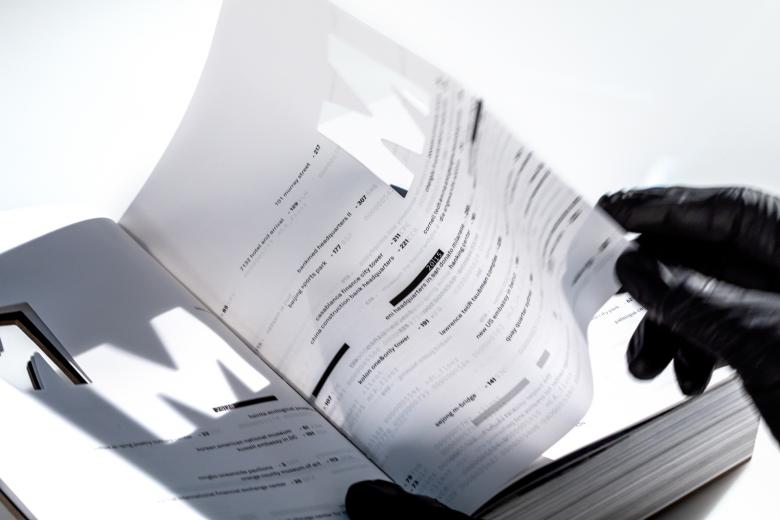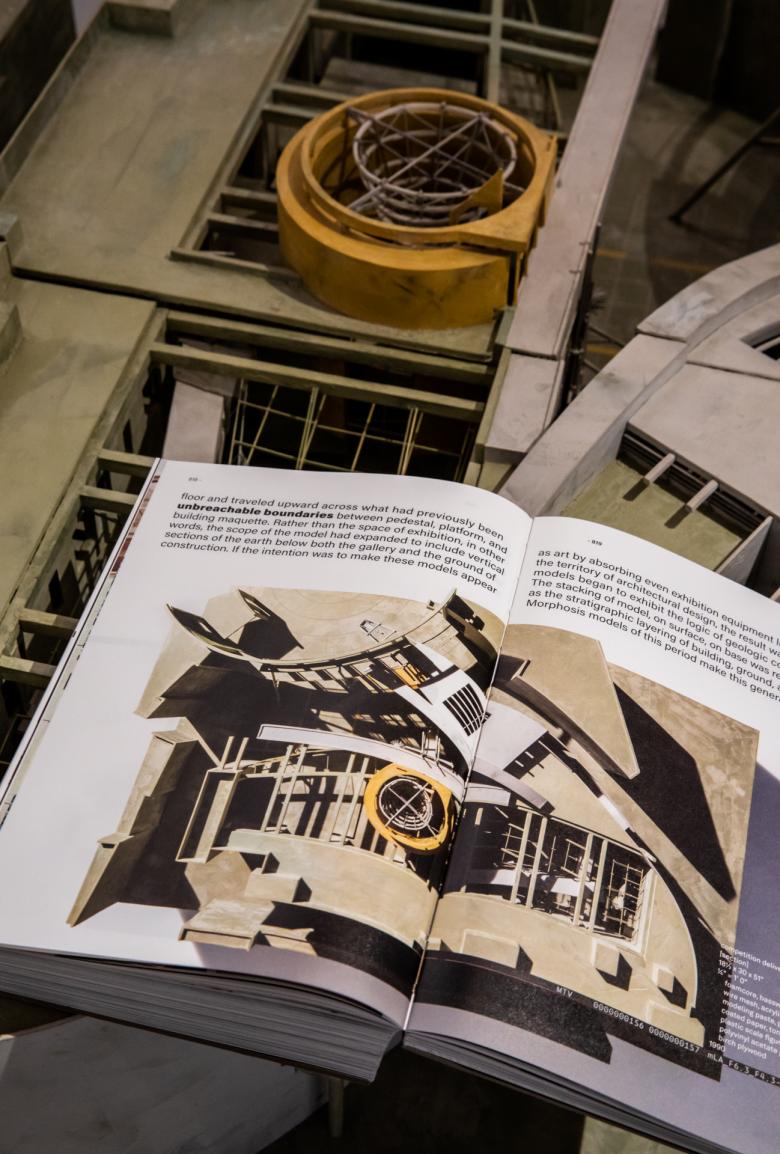9. April 2023
Photo: Jasmine Park © Morphosis Architects
The latest monograph on Thom Mayne and Morphosis, M³: modeled works [archive] 1972-2022, is a 1000-page tome that presents their entire 50-year oeuvre exclusively in photographs of the physical models that have helped make the Southern California studio so influential.
Since 1989, Rizzoli has published a series of Morphosis monographs that collect buildings and projects executed by the studio over roughly a decade — a fairly typical approach for architects deserving of such regular updates. This time, however, Thom Mayne and Morphosis have opted for a more comprehensive and cohesive look at five decades of the studio's architecture, eschewing photographs of completed buildings, drawings, and other illustrations in favor of a strict spotlight on architectural models. Presented in reverse chronological order — from the 3D-printed concept models of Ningbo Oceanside Pavilions in 2020 to a basswood model of the Mexico House II project from 1978 — M³: modeled works [archive] 1972-2022 is a trip back in time through the studio's built and unbuilt projects by way of the changing materials, trends, and styles of model making.
Photo: Jasmine Park © Morphosis Architects
The book starts with a table of contents that organizes the dozens of projects in a way that appears anything but organized, with no apparent logic to their location on the page or adjacency to other projects. Series of three-letter codes and numbers in gray indicate that some sort of strict logic underlies all of the projects documented in the book; these letters/numbers reappear on each page of model photos, yet they are not explained. Still, based on the foreword by Hallie Black, who Mayne describes as “the über-producer of this book,” the letters and numbers apparently serve as office codes for locating and tracking the models that were produced by the studio and were uncrated for the making of M³. If each model is given a number, as I'm guessing they are, the studio has created well over 5000 of them over a 50-year period!
Photo: Jasmine Park © Morphosis Architects
When I was an architecture student in the early 1990s, the hardest library books to track down were the Morphosis monographs, those published by Rizzoli and others; the books sat on fellow students' desks, serving as fodder for designs but also presentation techniques. Most influential were the beautifully produced models in basswood, chipboard, foamcore and — most importantly — modeling paste painted in some bold but kind of dirty color. (The smell of Bondo filling the architecture school hallways is still fresh in my memory.) The hinge between these pre-digital models, for lack of a better term, and the 3D-printed models that took precedence at Morphosis and other architecture studios since, can be found in 2002, with Morphosis's design for an Alessi teapot. (The list of materials for each model made this determination easy.) Following the teapot chronologically, but coming before it in the sequence of the book, are dozens of all-white 3D-printed models. One can lament the inability of younger architects this century in being able to make hand-built models, but the fact Morphosis has retained its voluminous output of models in the midst of computer modeling signals the importance of models in all stages of design, from concept design to client presentations.
Photo: Jasmine Park © Morphosis Architects
Although this monograph is visually limited to photographs of models, they are not the only contents that fill its pages. Running across the top of each page are words contributed by a who's-who of architects in and beyond Southern California: Tadao Ando, Marlon Blackwell, Teddy Cruz, Neil M. Denari, Sou Fujimoto, Steven Holl … the list goes on. Writing about Morphosis's projects, models, and other subjects, the words are solid, like a ticker with authors' names in brackets, certain phrases in bold, and what looks like an architectural scale serving as paragraph breaks. The texts insert some theory across the top of model photos that otherwise serve to capture form and technique. The words and images combine to create an unconventional monograph — but one that is distinctively Morphosis.
![M³: modeled works [archive] 1972-2022](https://images.randomhouse.com/cover/9780847872756)
M³: modeled works [archive] 1972-2022
Thom Mayne and Morphosis
Foreword by Hallie Black
6-1/2" x 9-1/2"
1008 Pages
Hardcover
ISBN 9780847872756
Rizzoli
Purchase this book



